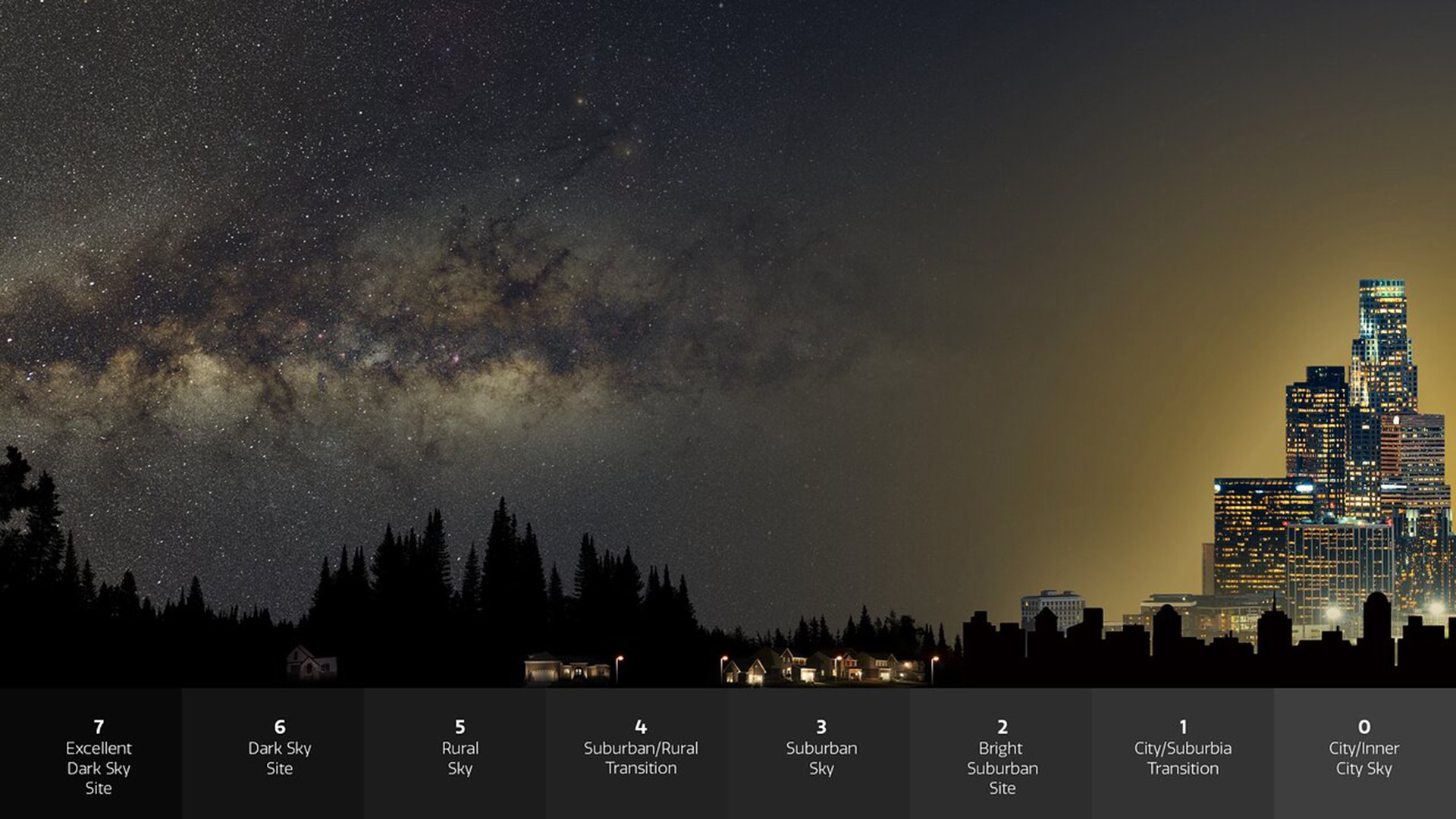Celestial Bodies Represented in Ancient Times
How our ancestors interpreted the night skies and were influenced by astronomical objects.
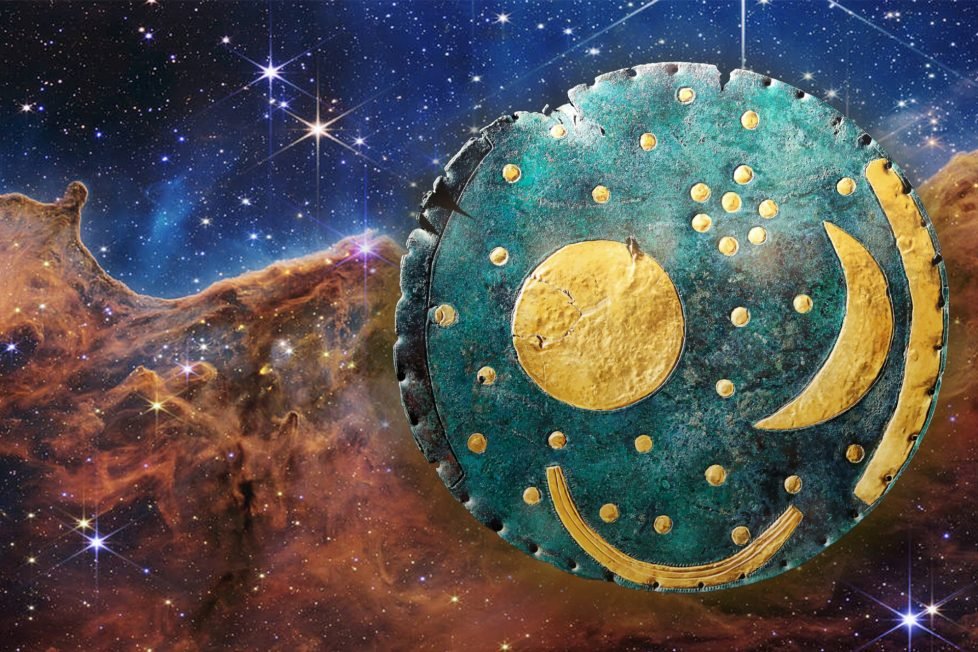
How our ancestors interpreted the night skies and were influenced by astronomical objects.

Table of Contents
ToggleFor as long as humans have been able to record stories and document observations, references to cosmic objects and what they may be or mean to those on Earth have manifested. Archaeological records show that all over the world astronomy was one of the first natural sciences developed by early civilizations in the Americas, Africa, Asia, Europe, Australia and Oceania.
Whether documenting the skies to comprehend our place in the universe or for a means of timekeeping or navigation, these studies through the ages have been depicted in art, carvings, hieroglyphs and texts. Through different civilizations, cultures, religions, right back to our prehistoric ancestors, these ancient fragments have given researchers an insight into humanity’s ongoing fascination with what is beyond our planet.
It must be noted that each of these early interpretations of astronomical objects has been the subject of debate with some contesting the accounts of the researchers. We will likely never know the true intentions of the people who created each artifact unless new evidence is exposed using updated methods and technologies or further supporting examples are found.
Dr Michael Rappenglueck, formerly of the University of Munich, believes that a 32,500-year-old carving upon a mammoth tusk is the first image of a star constellation created by man. He states that the figure with outstretched arms and legs replicates the exact positioning of the constellation of Orion at the time the carving was made. The tusk was found in 1979 in a cave located in the Ach Valley in Germany.
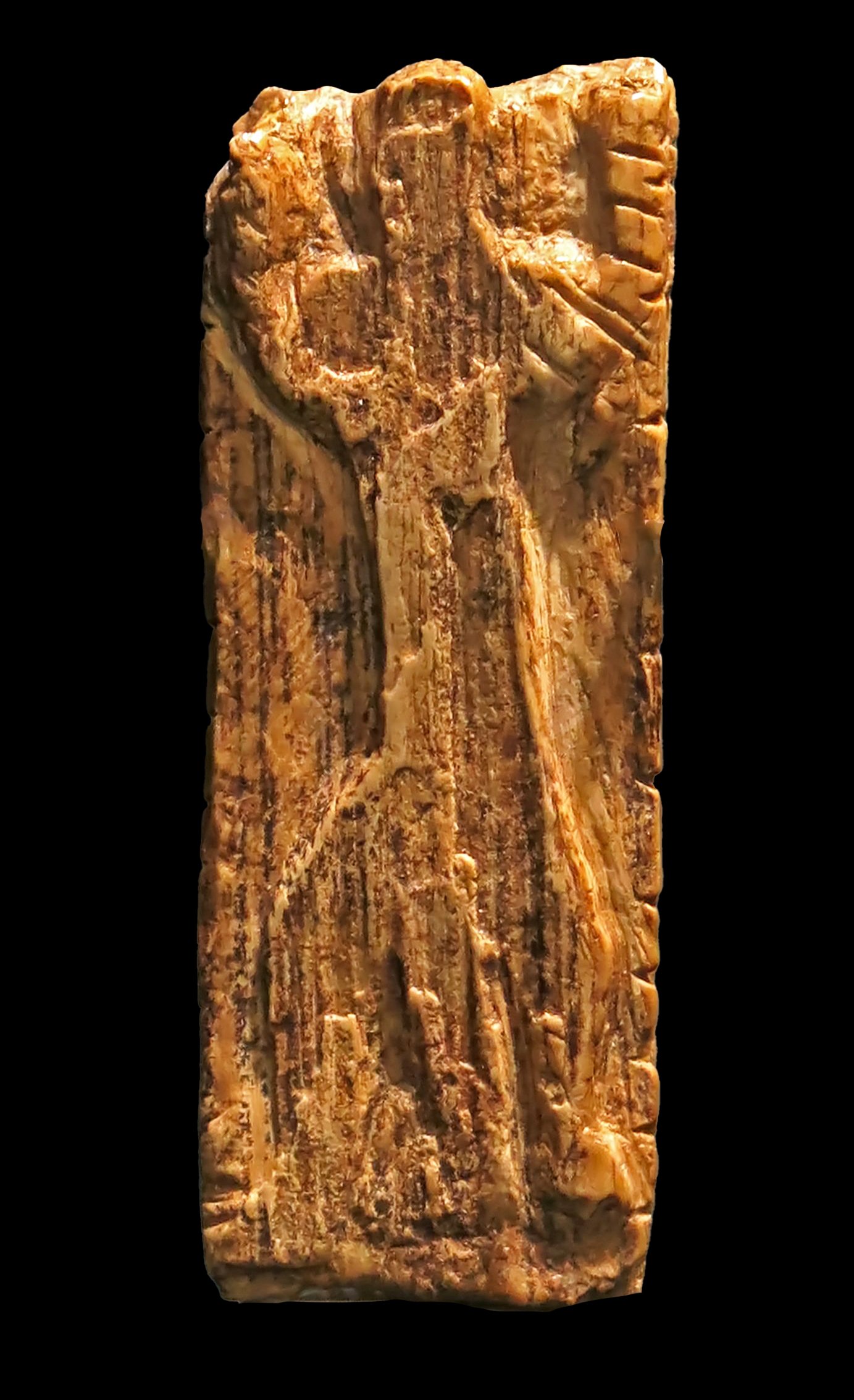
In 1940, four teenage boys discovered a cave in the Vézère River valley near Montignac in France. Within the cave they found an incredible array of artworks painted upon the walls and ceiling. The paintings included images and scenes of animals and humans. The boys knew they looked old and important, so they informed their teacher. The boys had actually stumbled upon one of the most outstanding displays of prehistoric art – still to this day.
Around 1500 engravings and 600 painted and drawn animals and symbols have been discovered at the site, now known as the Lascaux caves. Radiocarbon testing has dated items and paintings within the network of caves to be around 17,000 years old, although there are archeologists who believe some to be much older. The animals featured include red deer, horses, stags, bison and aurochs, a mammal that is now extinct.
In 2018, Dr Martin Sweatman, of the University of Edinburgh, published a paper in the Athens Journal of History that stated that the Lascaux cave art shows that people had advanced knowledge of the night sky within the last ice age.
Researchers from the universities of Edinburgh and Kent in the UK, studied details of Palaeolithic and Neolithic cave art sites in France, Spain, Germany and Turkey. By using computer software, they were able to predict the positions of stars when the paintings were made which led to their conclusion that the symbols could be based upon constellations. One scene they studied features a dying man and animals, they believe may commemorate a comet strike that happened around 15,200 BCE.
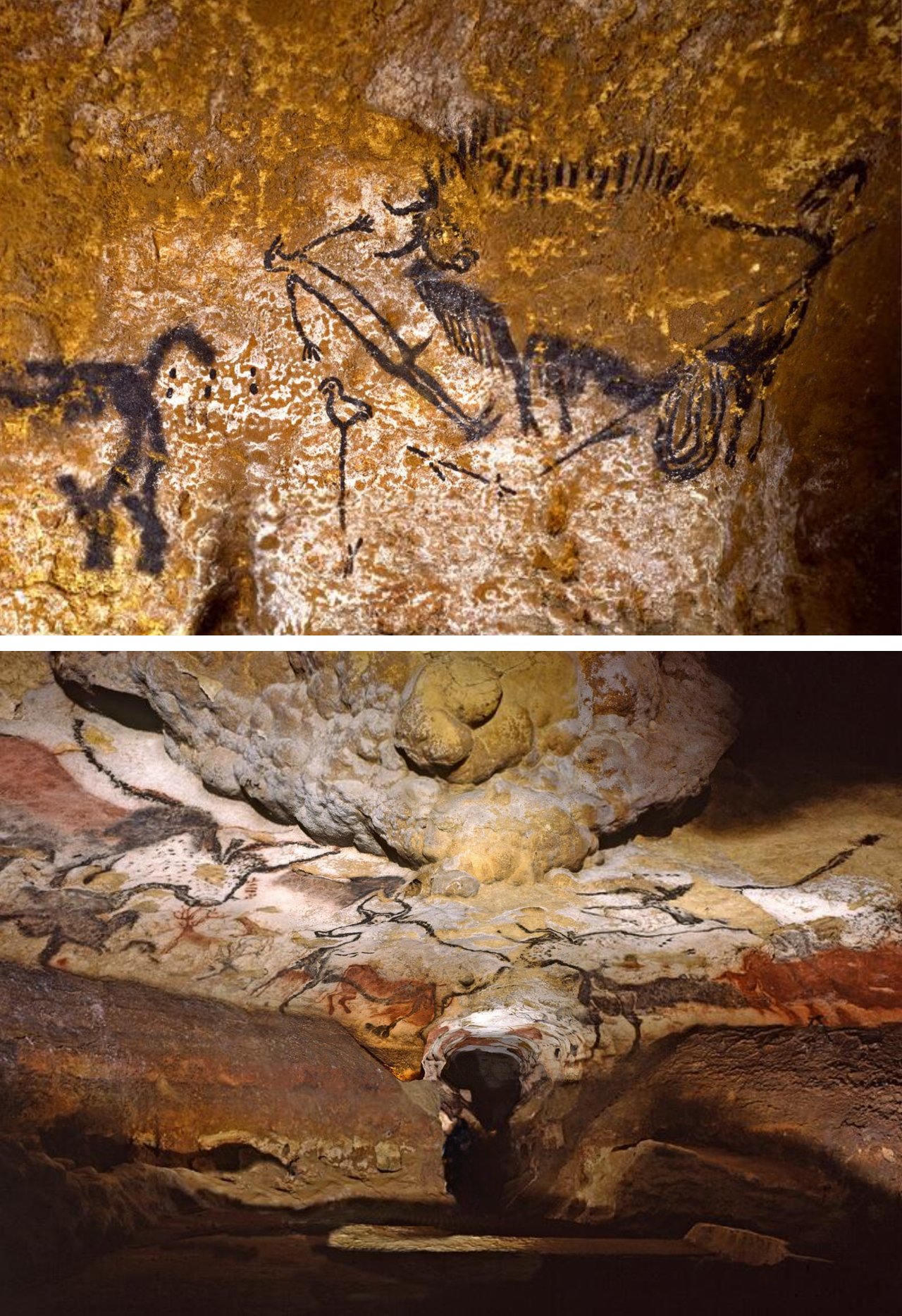
Another early artifact that may represent celestial bodies is the Nebra Sky Disk. According to UNESCO the bronze disk features the oldest depiction of cosmic phenomena worldwide, with symbols interpreted as the sun or full moon, a lunar crescent and stars. The disk has been dated back to 1600 BCE, the Bronze Age. It was buried 3600 years ago as a dedication to the gods on Mittelberg hill near Nebra in Germany.
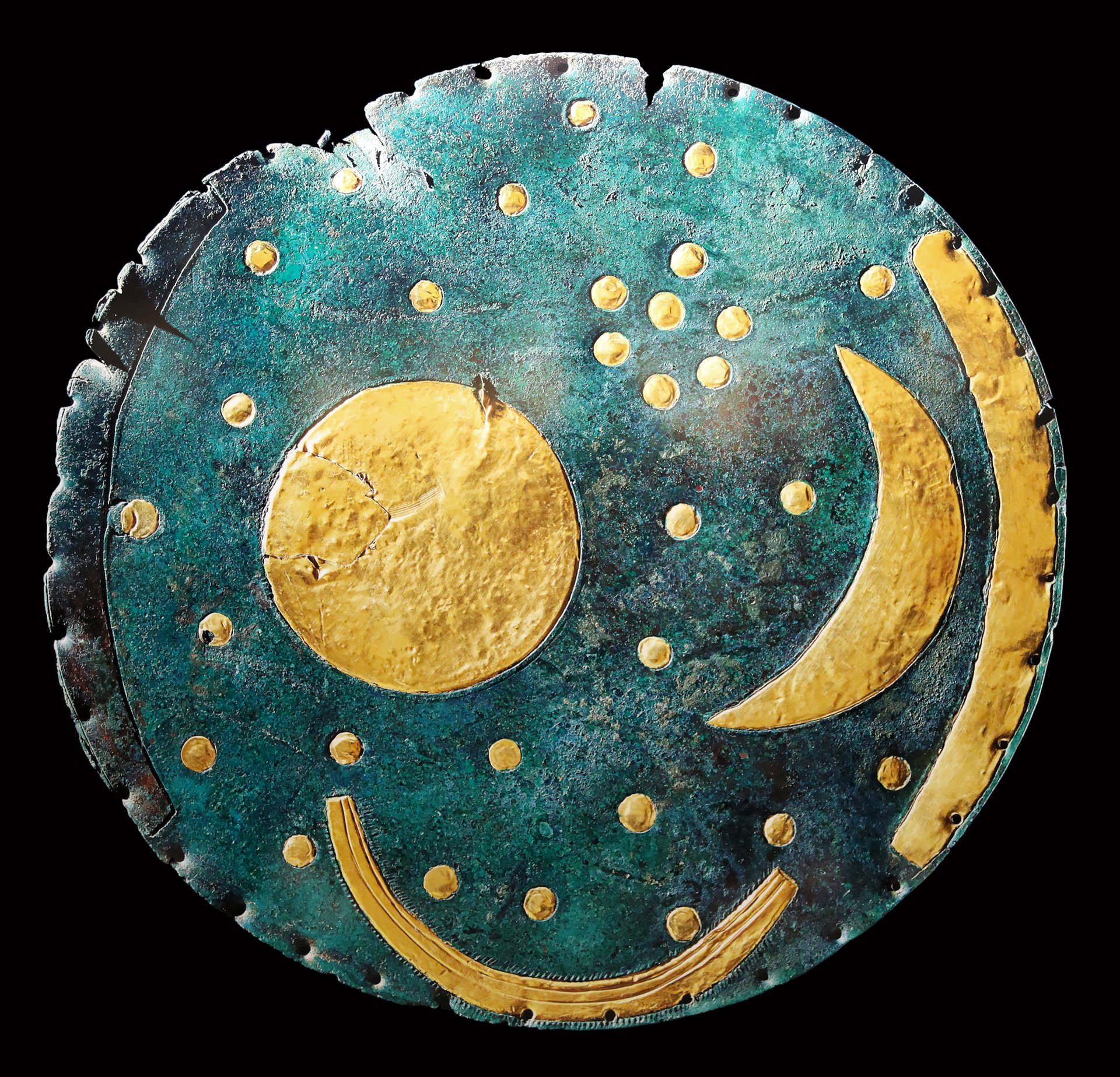
There are numerous ancient sites around the world that are believed to have been constructed in alignment with certain celestial events or bodies.
According to a 1992 paper published in the Journal for the History of Astronomy, radiocarbon dating put man’s arrival on the island of Malta at around 5000 BCE and the construction of the first temples to be around 3600 BCE. George Agius and Frank Ventura from the University of Malta considered that the building of the Ggantija megalithic temple may have been designed for astronomical reasons such as to align with the rising and the setting positions of the sun at solstices and equinoxes. They also found that the triple temple at Mnajdra faced exactly towards the equinox sunrise.
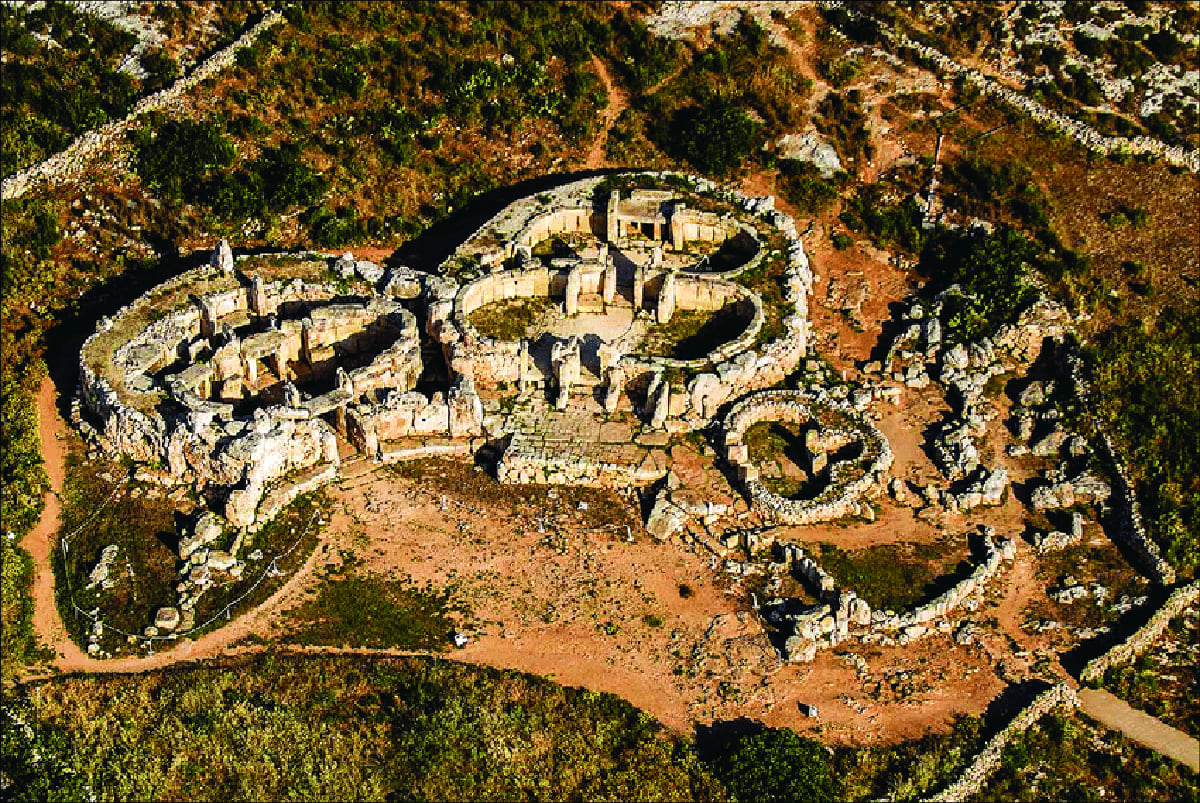
Around 5000 years ago construction began on Stonehenge in England. The stone circle seen today dates circa 2500 BCE. It is not known exactly why the Neolithic and Bronze Age people went to great efforts to build it – with some of the stones being brought from an area of Wales, over 150 miles away – but it’s believed that the stones were placed to align with the sun. For thousands of years the summer and winter solstices have been observed and welcomed here. On the longest day of the year (the summer solstice), the sun rises behind the Heel Stone in the north-east part of the horizon and the first rays hit the heart of the ancient site. On the shortest day of the year (the winter solstice), the sun sets to the south-west of the stone circle.
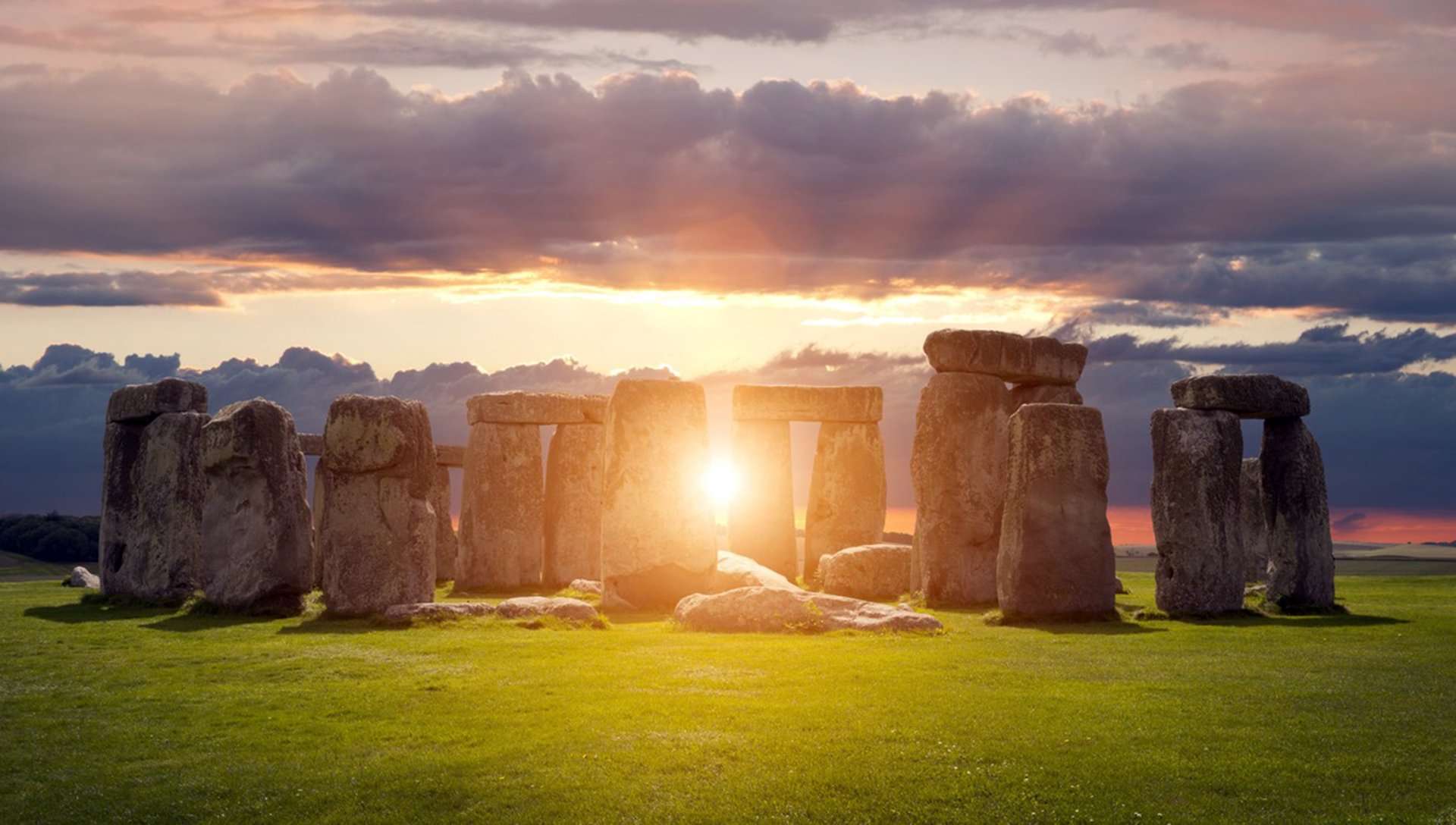
The ancient Egyptians are known to have studied the constellations and documented the motion of the stars to make decisions about when to plant crops and when to harvest. The Giza Pyramid Complex, located just outside Cairo, includes the Great Sphinx, the Pyramid of Menkaure, the Pyramid of Khafre and the Great Pyramid of Giza, all built around 2500 BCE (approximately the same time as Stonehenge).
Many theories have been put forth about possible correlations between the layout of the site and constellations such as the position of Orion’s Belt from 4500 years ago, although there is no proof that this was intentional. Most researchers agree that the ancient engineers used the sun’s motions to align the pyramids. For example, the four corners of the Great Pyramid of Giza align with the cardinal directions: north, south, east, and west.
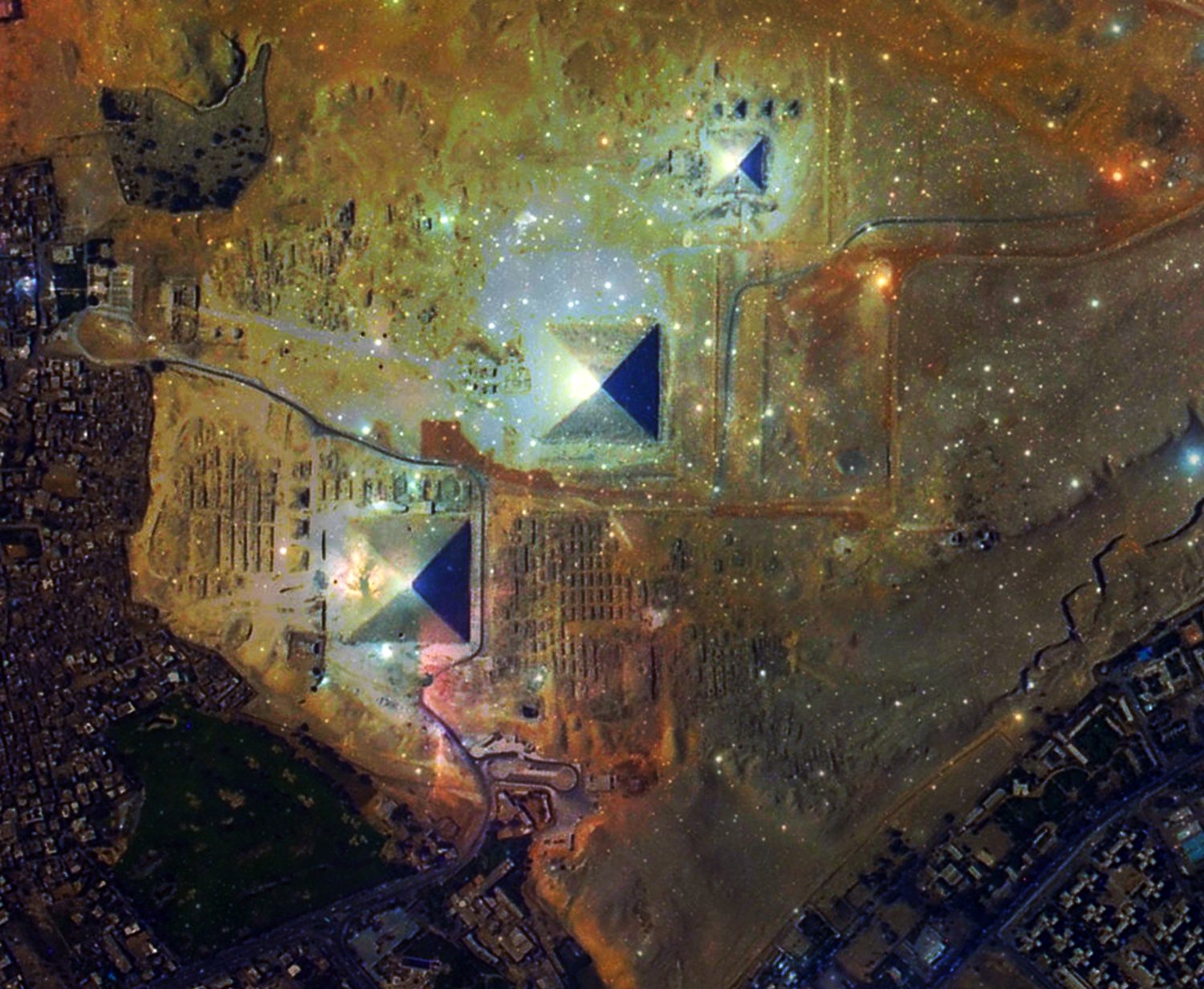
The Pyramid of the Sun is a large pyramid located in the ancient city of Teotihuacán in Mexico. The pyramid was built around 100 CE but other constructions within the site date back to 400 BCE. A study entitled Astronomical Alignments at Teotihuacan, Mexico, published by Cambridge University Press, proposed that the Pyramid of the Sun was positioned through a combination of astronomical and topographic criteria. The temple, located within the Ciudadela (a large square courtyard), was oriented both to sunrises and sunsets on significant dates. It was also placed in a perpendicular direction to Cerro Gordo, a mountain and natural viewing point that overlooks the site.
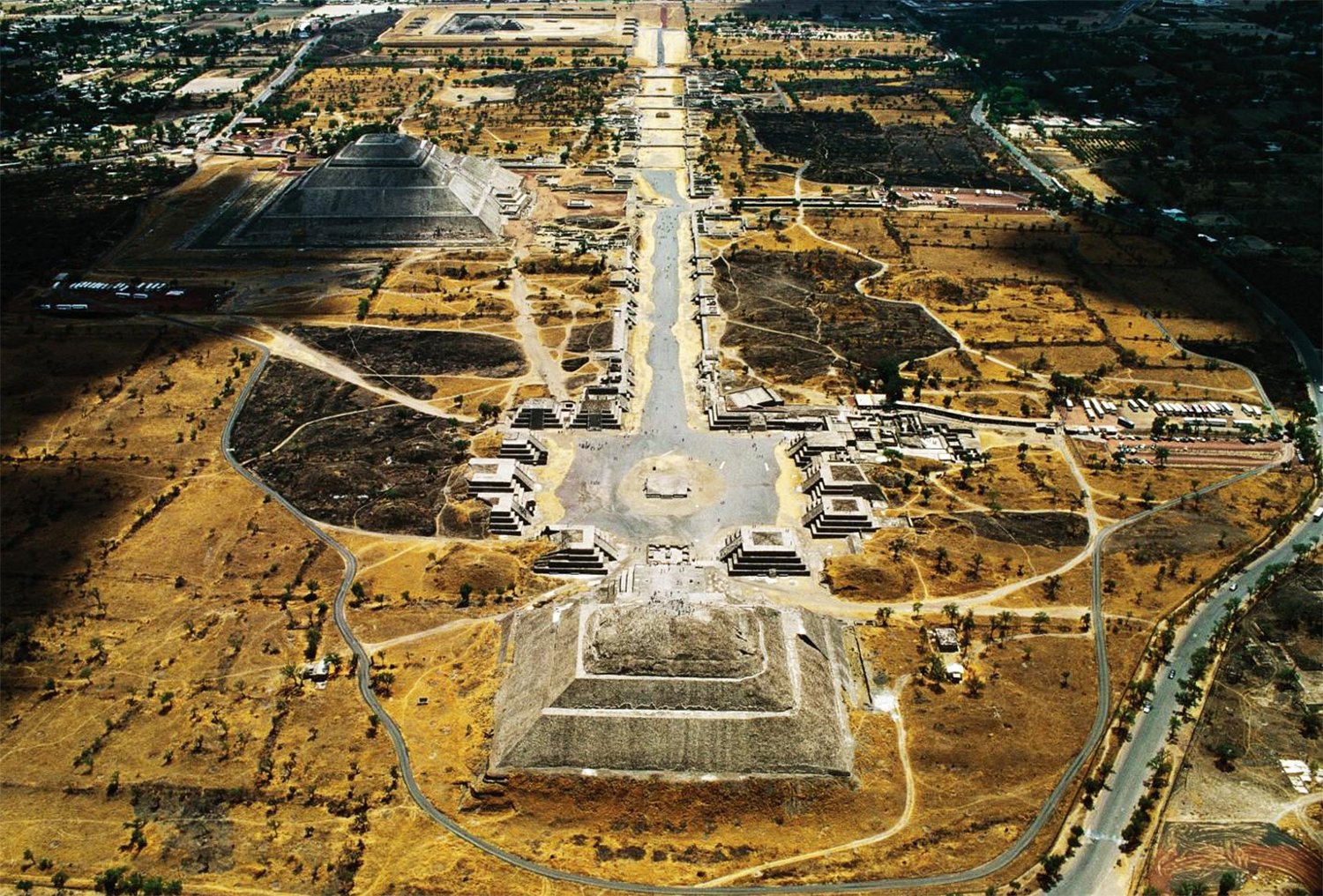
Before the Iron Age, most iron came from space in the form of meteorites. During ancient times they were rare and considered sacred or potentially a gift from the gods.
When the Egyptian pharaoh Tutankhamun died around 1324 BCE, he was buried with an iron dagger made from a meteorite, a metal at the time that was rarer than gold. Other artifacts such as beads that date back 5000 years have also been discovered. At around 1295 BCE a new hieroglyphic word appeared in Egyptian culture ‘Bia-n-pet’ literally translates as ‘iron from the sky’. It is thought that this may have occurred due to a witnessed impact event and the discovery of adequate quantities of the metal. In 2008 an impact crater formed by an iron meteorite was found in southern Egypt and is thought to have occurred within the last 5000 years.
Other artifacts that were crafted using remnants from meteorites have been found including the Alaca Höyük dagger made circa 2500 BCE in modern day Turkey, a pendant from Umm el Marra in Syria from around 2300 BCE and in China, two axes created during the early Chou Dynasty, dated to 1000 BCE.

The changes of the sun and moon, the mapping of the stars, planets and observing events such as eclipses were used in the creation of ancient calendars and measurements which were fundamental for agriculture and navigation.
The ancient Polynesians were some of the first prehistoric mariners known to use the stars to navigate across a vast ocean to reach remote islands. Between 1500-1000 BCE, this non-instrumental method of oceanic navigation allowed them to settle more than 1000 islands scattered along the north shore of New Guinea, the Solomon Island chain and islands across the Polynesian Triangle between New Zealand, Hawaii and Easter Island.
Mesopotamia was the land between the Tigris and Euphrates rivers, occupied by the ancient kingdoms of Babylonia, Sumer and Assyria. The first recorded systematic observations of the motion of the stars and planets dates back to the Assyro-Babylonians around 1000 BCE. Although some of the information used to create these records was likely influenced by knowledge passed down from the Sumerians who developed a form of writing between 3500-3000 BCE and were known to have named stars and developed modern mathematical practices such as dividing an hour into 60 minutes and a circle into 360 degrees.
The Babylonians documented many astronomical events and observations on tablets. Within the British Museum’s collection there are two tablets, one that shows a written record of the passing of Halley’s comet in 164 BCE, the second, called the Venus tablet of Ammisaduqa, recorded the astronomical positions of Venus over a 21-year period.
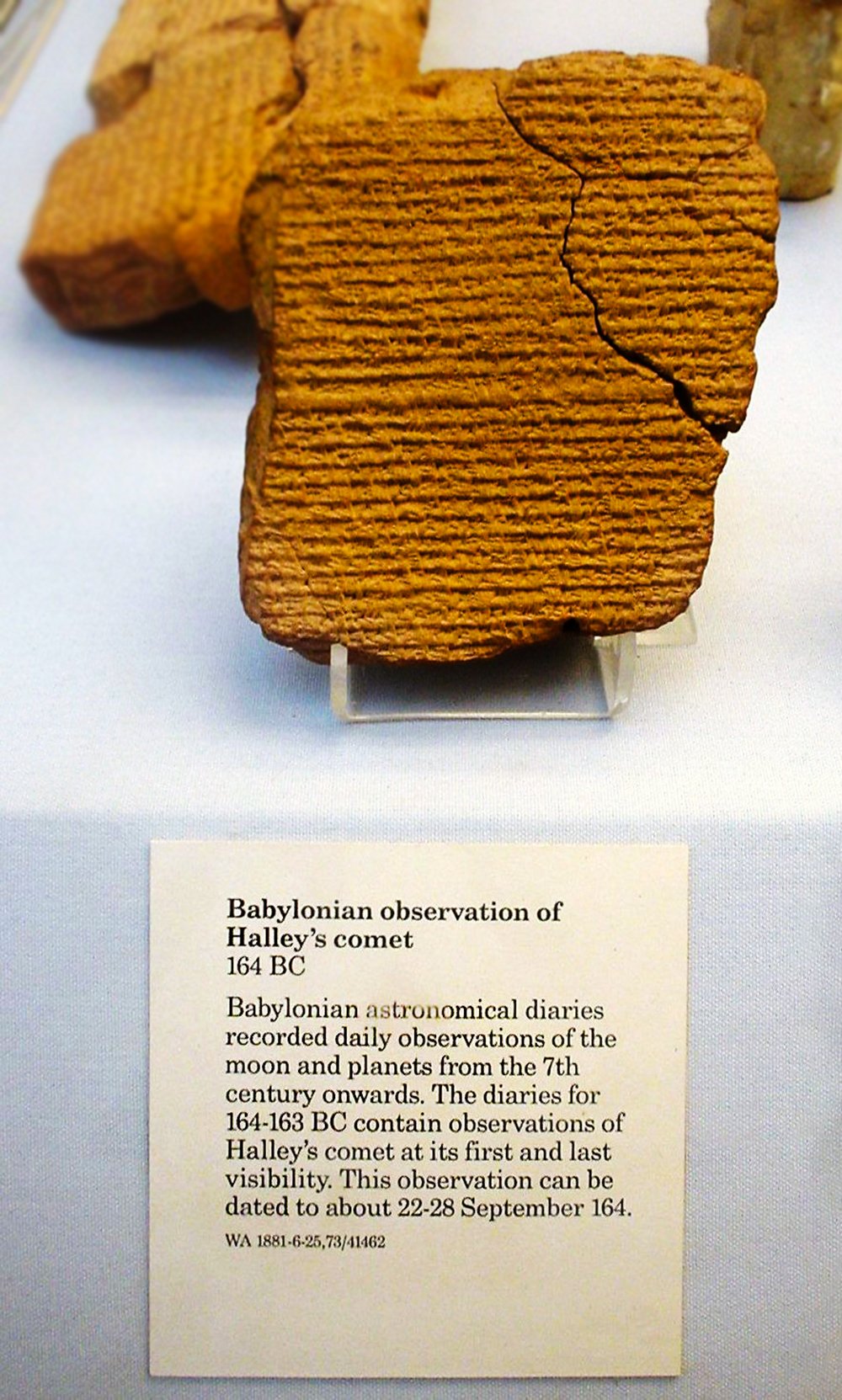
Babylonian astrology and astronomy spread to Egypt around the early second century BCE. Egyptian astronomy predominantly took a mythological form and was bound to their religious structure. Mapping the sky was an important part in religious matters, for example temple books recorded the movements and phases of the sun, moon and the stars. These techniques were used for establishing the dates of festivals and the hours of the night.
Ancient Egyptians produced the 365-day solar calendar and also established the use of a 24-hour day. A ceiling in the tomb of Senenmut (1479-1458 BCE) at Deir el-Bahri, was found to be decorated with constellations, a list of named planets, stars known as the decans and 12 circles that were each divided into 24 – referencing the months in a year and hours in a day.
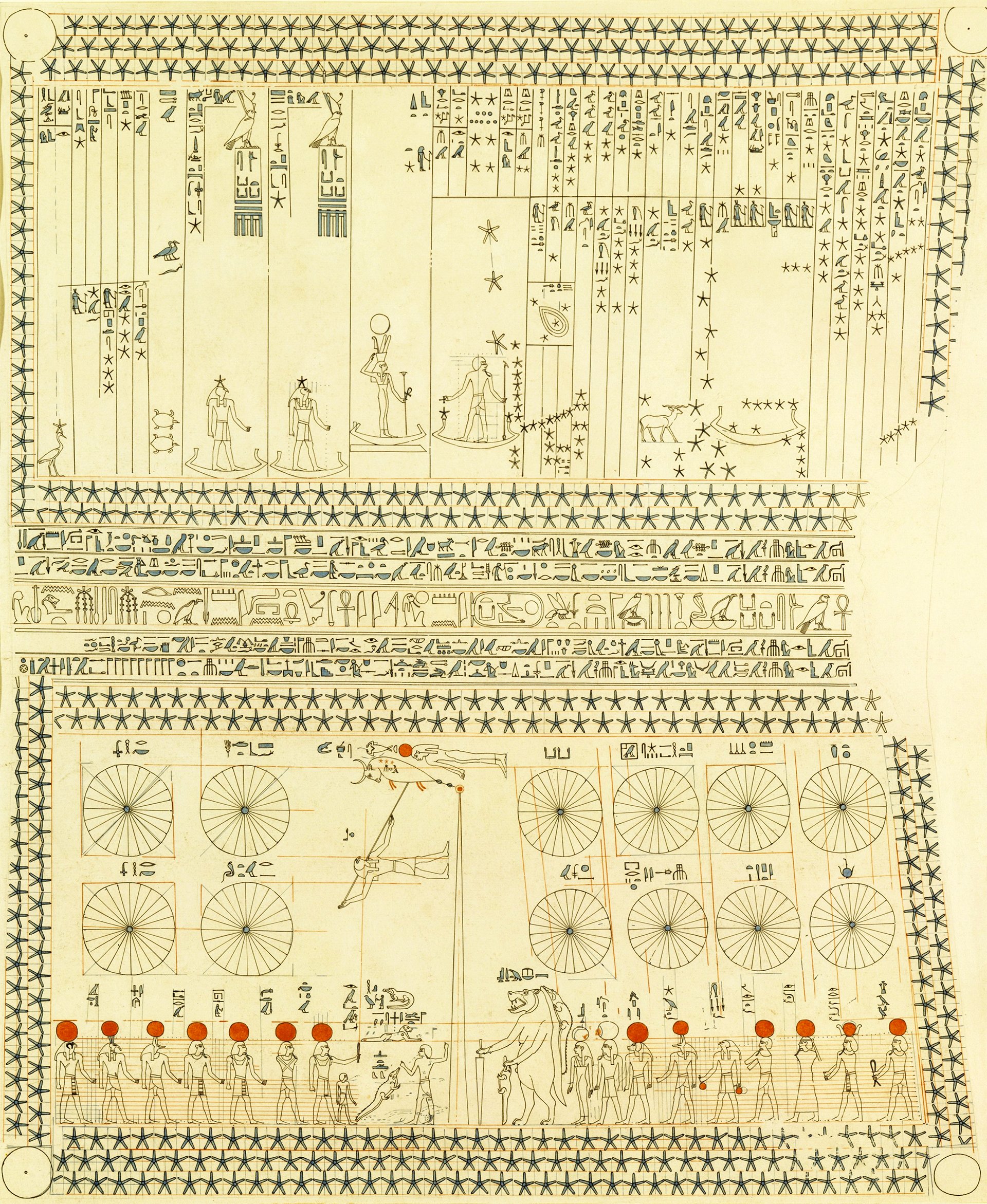
Astronomical observations in China began around 1200 BCE. Early accomplishments included the first recording of a total solar eclipse made in 780 BCE. Astronomy in the region flourished during the Warring States period (481-403 BCE). One of the most prominent astronomers from this period was Gan De who is credited with one of the earliest attempts to document the sky. Another important astronomer, Shi Shen, created one of the most detailed and oldest catalogs of the stars in 350 BCE which included almost 800 entries.
In the year 185 CE, Chinese astronomers noted in the Astrological Annals of the Houhanshu, a bright light amongst the normal stars that remained for eight months. A phenomenon that is now believed to have been the first recorded sightings of a supernova.
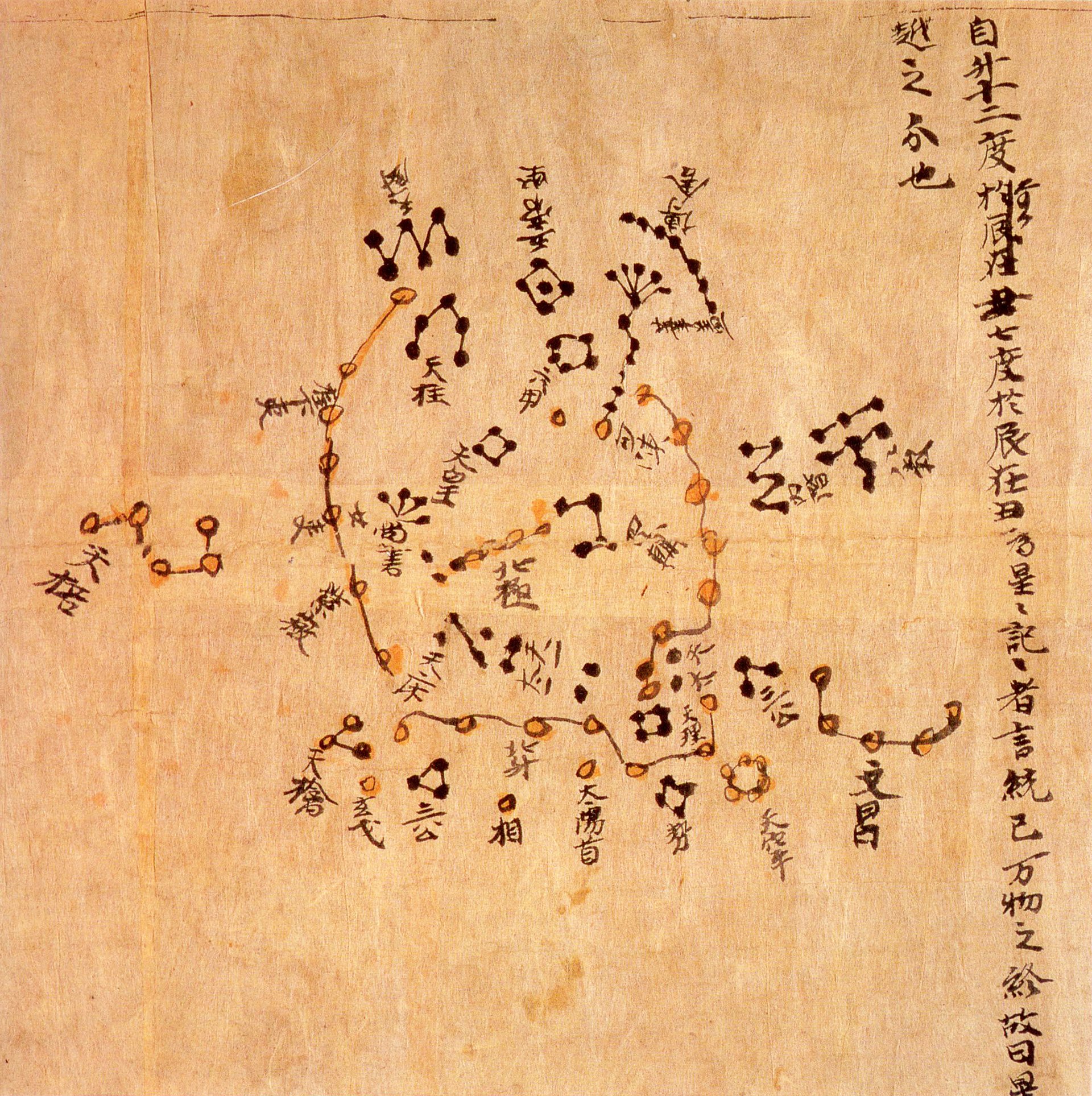
The astronomers, philosophers and mathematicians of ancient Greece made enormous contributions to celestial mechanics: the way in which our solar system was understood, viewed and studied.
Aristarchus of Samos (310-230 BCE) was one of the first philosophers to propose the heliocentric model, in which the sun rather than the Earth was at the center of the solar system and all the planets orbited the sun. Although it was still widely believed for another 1700 years, that Earth was at the center. Around the same period one of the first star catalogs was created by Timocharis (320-260 BCE).
Astronomer Hipparchus (190-120 BCE), established an understanding of the motions of the stars and was able to measure their precise positions. His star catalog documented the positions of many objects in the night sky listing some 850 stars.
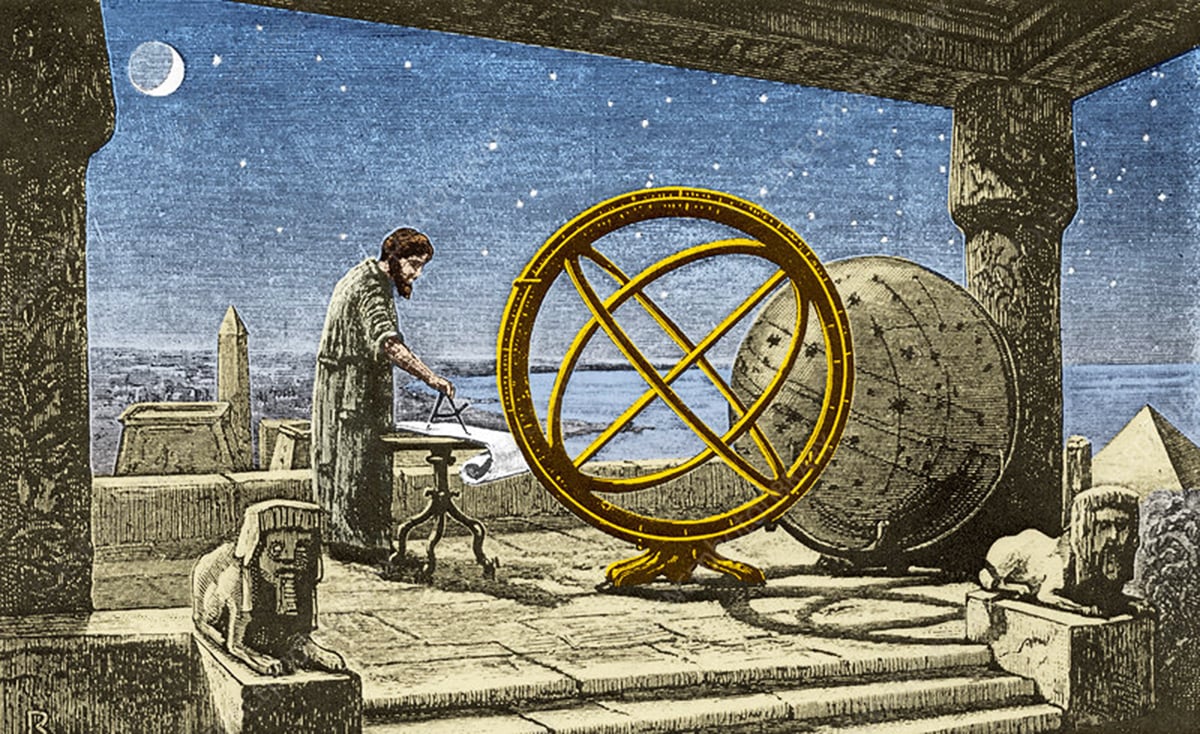
After Hipparchus, Claudius Ptolemy, an Egyptian astronomer, mathematician and geographer of Greek descent, created his own star catalog around 150 CE. He also supported the idea that the motions of the heavenly bodies could be explained in mathematical terms and used early instruments such as the armillary sphere to present his theories.
Other ancient civilizations also contributed a great deal to developments in astronomy including the Persians, Indians and Mayans.
As well as the sky being studied from a mathematical and scientific approach, civilizations also developed an understanding of the constellations and astronomical bodies through mythological and cosmological methods such as the Zodiac.
The Zodiac is a belt-shaped region of the sky that is separated into 12 sections, each with a sign. The origins of the zodiac sign system can be traced back to the Babylonians around 450 BCE. They are attributed to being the first civilization to apply myths to certain constellations and describe the 12 signs of the Zodiac. However, the Greeks, Egyptians and Romans went on to develop similar systems with a few modifications.
The ancient use of the Zodiac is believed to have roots in both astronomy and astrology. It was used as both a measurement of time, a method of mapping the sky but also attached mythical ideas to the signs that were used in divination.
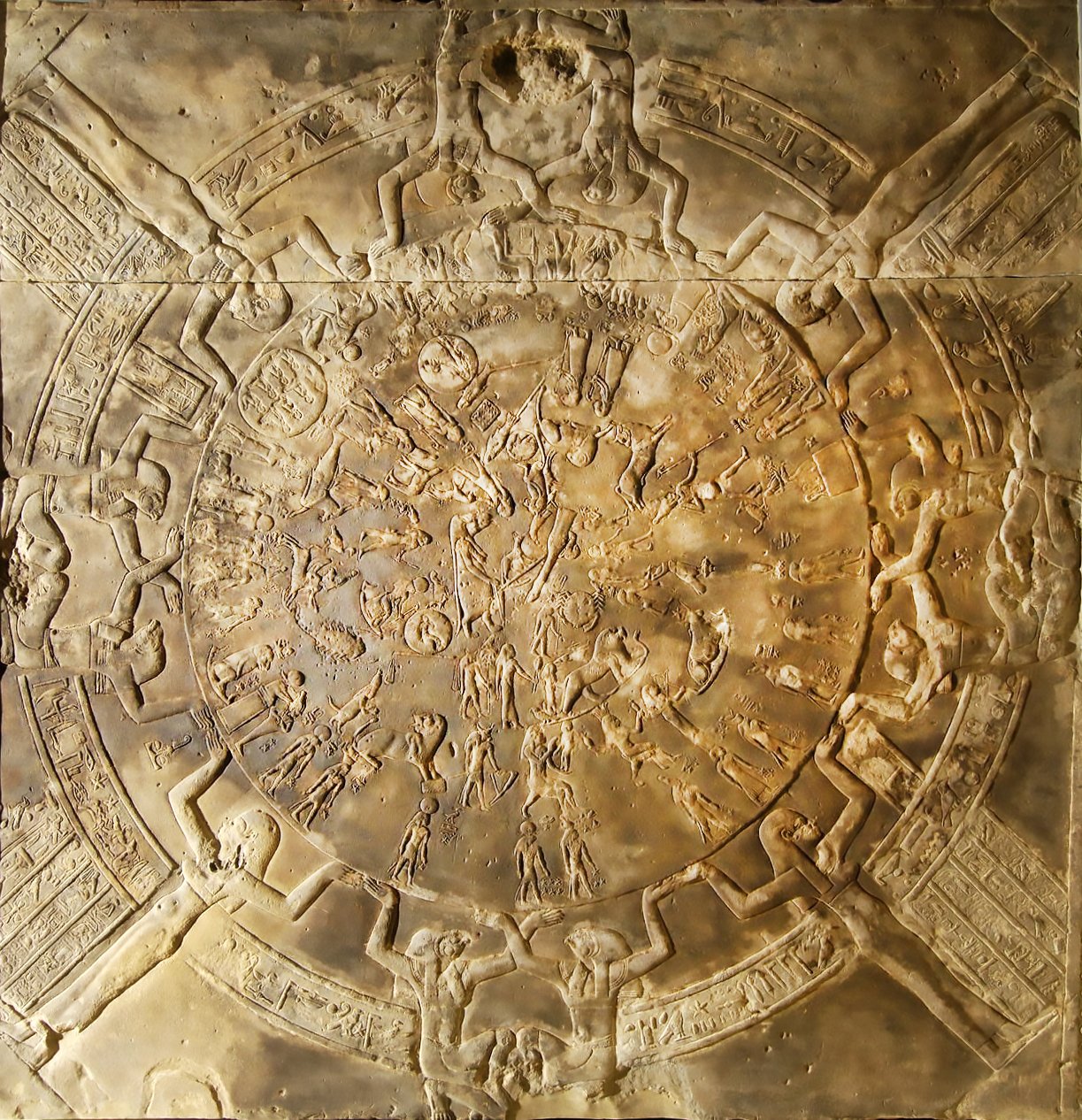
Two of the best-known examples of the ancient Egyptian Zodiac depictions include a series of ceiling paintings in the Temple of Esna which date back to 305-30 BCE, and the Dendera Zodiac dated to around 50 BCE which was located in the Dendera Temple Complex on the West Bank of the Nile River, in dedication to the god Osiris, until an antiquities collector blasted it out of the temple’s ceiling and shipped it to France. The sandstone bas-relief features the 12 constellations of the zodiac, five planets as well as a solar and lunar eclipse.
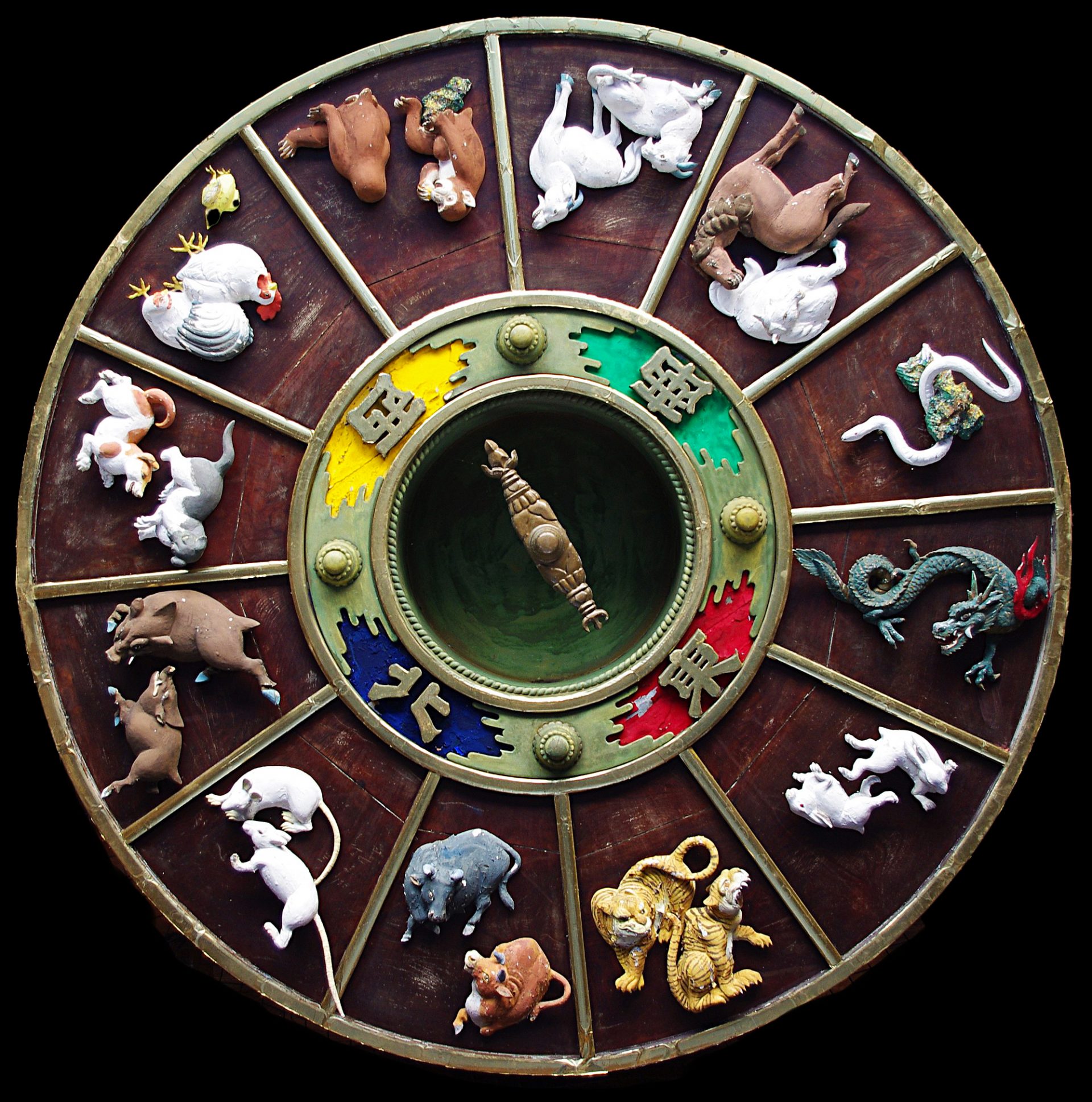
The Chinese also developed a Zodiac during the Zhan Guo period (around 475-221 BCE) which was based on a lunar calendar, as opposed to the stars, with a 12-year cycle with each sign referring to an animal.
Many other cultures have ancient traditions in astronomy but their ancestors relied heavily upon storytelling. Aboriginal Australians are thought to have arrived on the continent at least 50,000 years ago. Many of their stories of the stars and night sky are related to the creator spirits and told in songs and dances that reference the constellations. They may well have been the first astronomers but unfortunately nothing was documented.
Our ability to see the night sky from the ground looking up is not as good as our ancestors. Visibility has been damaged through light pollution and our night sky is now more cluttered with artificial celestial bodies that include: satellites, the International Space Station, debris, drones and weather balloons. Unless you are positioned in a remote location it can be hard to observe the stars, planets, comets and meteorite showers.
What we cannot see easily with the naked eye, we compensate with technological aids in the form of telescopes, binoculars and phone apps that instantly map the stars and planets for us using GPS to highlight every point in the visible night sky. Beyond these tools we can use at home, we have incredible images from much more advanced telescopes in space such as Hubble and James Webb. We can see further and in more detail than ever before and have more precise data but we may not be any clearer on our origins or the nature of our existence on Earth than our ancient ancestors were.
Many people all over the world still follow their star signs and believe that the Zodiac will bring signs of divination. There are other so-called conspiracy theories that have large followings such as flat earthers, hollow moon enthusiasts, people who believe we live in an artificial matrix or a hologram. Who knows what will be discovered in the future and which ideas will be discarded to time?
